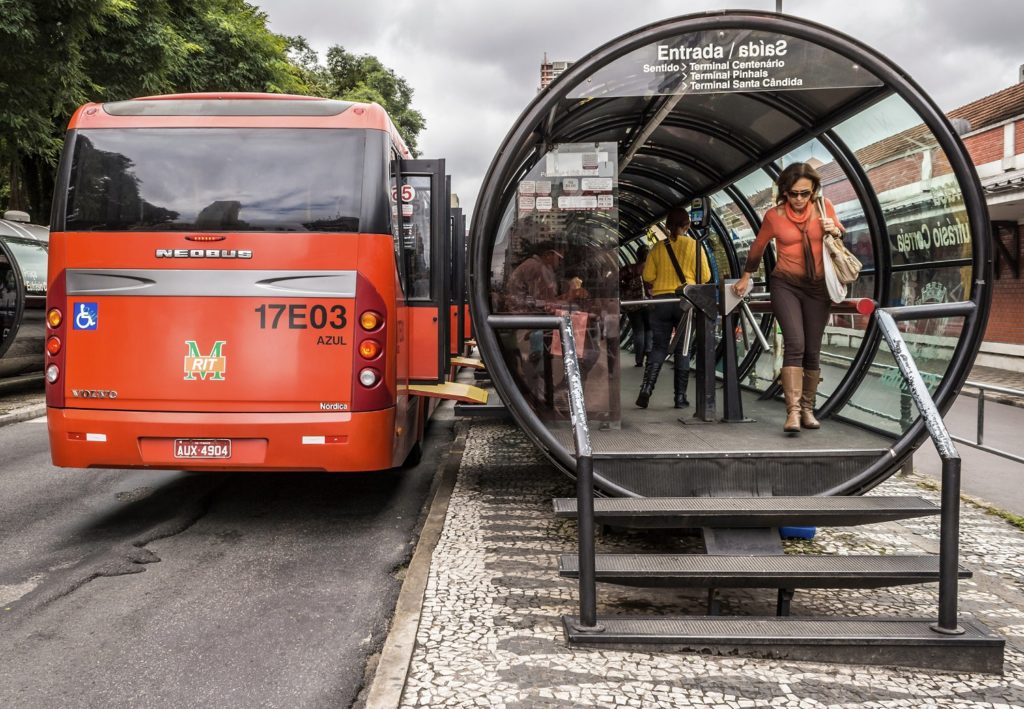
The bus and rapid transit system in Curitiba, Brazil is widely considered to be one of the most efficient and innovative public transportation systems in the world. Developed in the 1970s, the system has undergone several major expansions and renovations over the years to keep up with the city’s growing population and changing transportation needs.
One of the key features of the Curitiba bus system is its use of dedicated bus lanes, which are separate from the rest of the traffic on the roads. This allows buses to move quickly and efficiently through the city, reducing congestion and travel times for passengers. Additionally, the system is designed to be highly interconnected, with multiple bus lines converging at key transfer points to make it easy for passengers to switch between different routes.
Another unique aspect of the Curitiba bus system is the use of “integrated corridors,” which allow passengers to transfer between different modes of transportation, such as buses, trains, and subways, at a single location. This makes it easy for passengers to travel long distances across the city without having to transfer multiple times. Additionally, the system is designed to be highly accessible for all, with low-floor buses and wheelchair ramps available at all major stops.
One of the most notable components of the Curitiba bus system is the “Bus Rapid Transit” (BRT) system. The BRT system is a high-capacity, high-speed bus service that uses dedicated bus lanes and advanced technology to move large numbers of passengers quickly and efficiently through the city. The BRT system is designed to be a low-cost alternative to other forms of public transportation, such as subways and light rail, and has been credited with reducing traffic congestion and improving air quality in the city.
Another important aspect of the Curitiba bus system is the use of “environmentally friendly” buses. These buses are powered by clean energy sources, such as electricity or biofuels, and are designed to produce fewer emissions than traditional gasoline or diesel buses. Additionally, the system is designed to be highly energy-efficient, with advanced technologies such as regenerative braking and automatic shut-off systems that help to reduce fuel consumption and emissions.
Overall, the bus and rapid transit system in Curitiba, Brazil is a model for other cities around the world. Its use of dedicated bus lanes, interconnected routes, and integrated corridors makes it easy for passengers to travel around the city quickly and efficiently, while its focus on environmental sustainability and accessibility makes it a socially responsible choice for transportation. With continued investment and expansion, the Curitiba bus system will continue to evolve and improve to meet the needs of the city’s growing population and changing transportation landscape.
